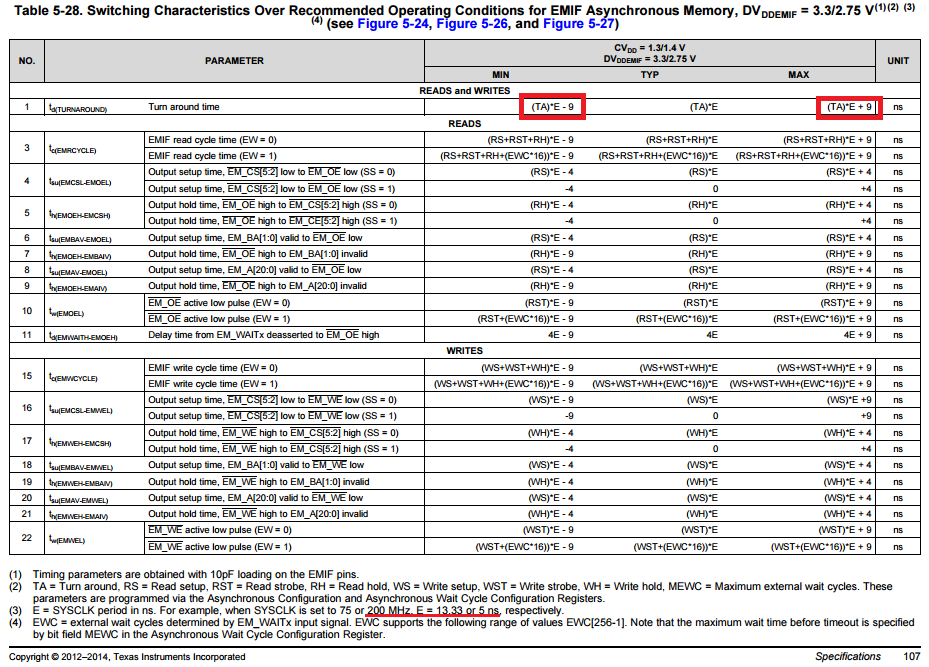Hi,
I have qestion about EMIF timing of C5517.
The td(TURNAROUND) is described as follows.
If SYSCLK is used at 200 Mhz, the minimum value will be a negative value, so I think that this prescribed value is wrong.
Is the margin (± 9 ns) incorrect?
Best regards,
H.U



